Florida hopbush (
Dodonaea viscosa) has become a popular choice in warm, arid regions of the U.S., where its drought tolerance, fast growth rate and ability to thrive in full sun are especially appreciated. Whether it’s grown as a tall shrub, small tree or hedge, it is hard to find another water-wise plant that can be used in so many different ways. Native to the U.S. and other warm regions of the world, hopbush has a versatility that makes it an asset to both residential and commercial landscapes.
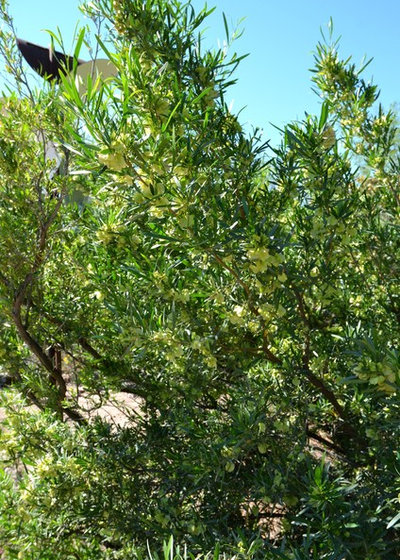
Noelle Johnson Landscape Consulting
Botanical name: Dodonaea viscosaCommon names: Florida hopbush, hop bush, hopseed bush, hopbush
Origin: Native to Arizona, Mexico, Florida and other warm regions of the world
Where it will grow: Hardy to 15 degrees Fahrenheit, or minus 9 degrees Celsius (USDA Zone 8; find your zone)
Water requirement: Drought-tolerant once established but does best when watered every three to four weeks in summer and monthly in spring and fall; in desert regions, water every 14 days in spring through fall and rely on natural rainfall in winter
Light requirement: Full sun to light shade
Mature size: 12 feet tall and 10 feet wide, but can be maintained at a smaller size
Benefits and tolerances: Drought-tolerant; provides shelter for birds; deer-resistant
When to plant: Spring or fall
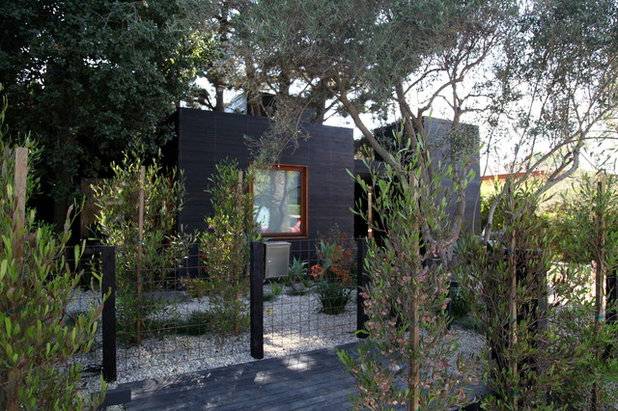
Kiesel Design - Landscape Architecture
Distinguishing traits. Hopbush’s attractive foliage and the excellent screening it provides are the main reasons for its increasing popularity in the landscape. This fast-growing shrub remains evergreen in zones 9 and above and features leaves that are 2 to 3 inches long and ½ inch wide.
D. viscosa ‘Purpurea’ is a cultivated hopbush variety with purple foliage and is less cold-hardy than the straight species.
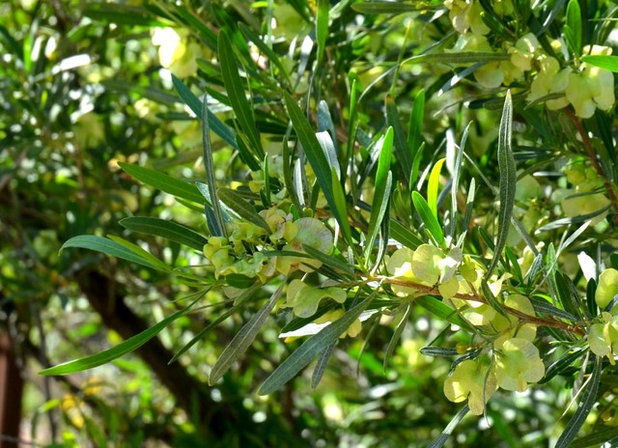
Noelle Johnson Landscape Consulting
Unremarkable small, round chartreuse flowers emerge in spring. While the flowers may be hard to notice, the papery three-sided fruit they produce subtly changes the appearance of this water-wise shrub. The fruit, seen in this photo, has been used in place of hops for brewing beer.
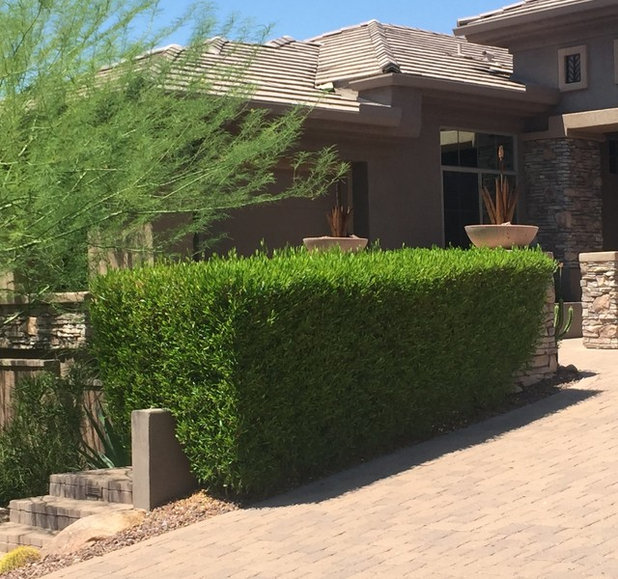
Noelle Johnson Landscape Consulting
How to use it. Grow hopbush as an informal hedge to separate areas of the landscape or shear it into a formal hedge, as seen here. A row of hopbush can serve as a windbreak, delineate property lines, provide privacy or create separate garden rooms.
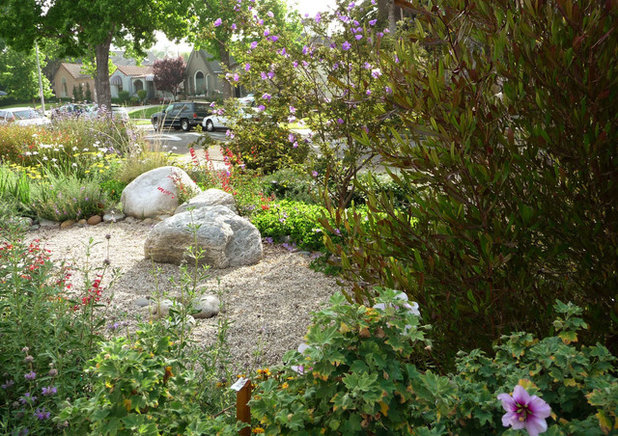
Urban Oasis
Hopbush’s attractive foliage can cover a bare wall or fill in an empty corner of the garden. Its size makes it a great choice for concealing pool equipment, air conditioning units or any other areas of the landscape you wish to hide.
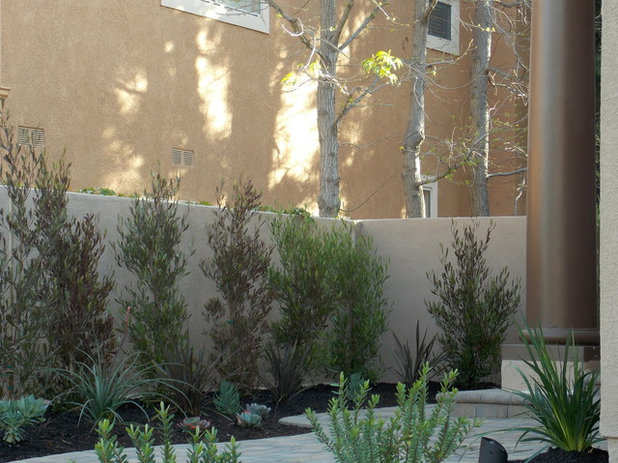
xeristyle | exterior | design
The purple form of hopbush (
D. viscosa ‘Purpurea’) creates striking color contrast alongside gray-foliaged plants, such as ‘Blue Bells’ (
Eremophila hygrophana ‘Blue Bells’), candelilla (
Euphorbia antisyphilitica), upright myrtle spurge (
Euphorbia rigida), Parry’s agave (
Agave parryi) and woolly butterfly bush (
Buddleja marrubiifolia).
Increasingly, hopbush is being used as a substitute for oleander shrubs (
Nerium oleander), which have been affected in certain areas of Arizona and Southern California by oleander leaf scorch, a disease caused by the
Xylella fastidiosa bacteria; it causes the plants to decline and die.
Shown: Green and purple hopbush planted along a wall
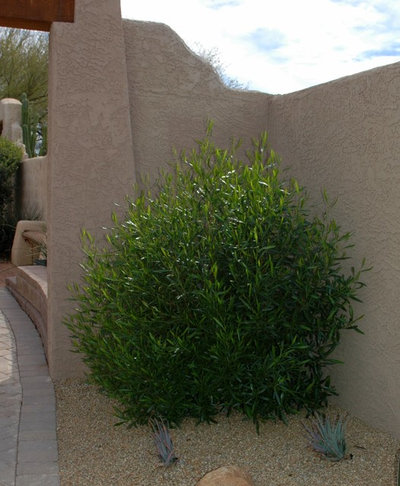
Noelle Johnson Landscape Consulting
Planting notes. These attractive, drought-tolerant shrubs aren’t fussy. Provide well-drained soil and a sunny spot in the garden, and they will take care of the rest.
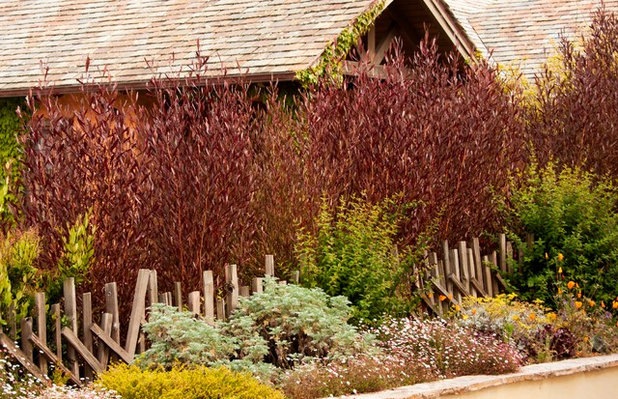
Monrovia
Hopbush is very low-maintenance. It requires no supplemental fertilizer and, if you give it enough room to grow to its mature size, very little pruning is required, unless you prune it into a more formal hedge.
Shown: The purple form of hopbush being used as a backdrop for a perennial bed





